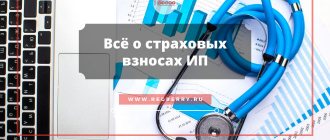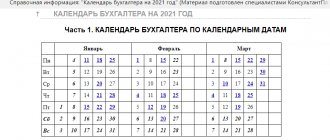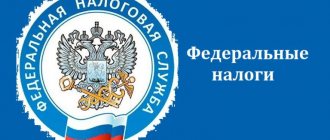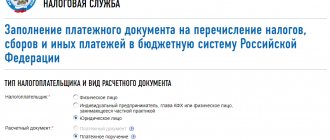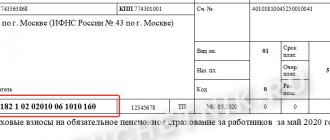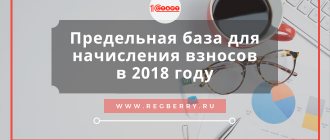Payroll deductions are insurance premiums or taxes that employers transfer to benefit the insurance coverage of working citizens. All payments from 2021 are administered by the Federal Tax Service (except for contributions for injuries).
In February 2021, reports appeared in the press about government plans to reduce wage taxes in 2021, or more precisely, insurance payment rates (by about 5-7 percentage points, that is, in total, the burden on employers should decrease from the current 30% to 23-25 %).
While no decisions have been made, let's see how contributions are calculated in 2020.
How to correctly calculate taxes on salary
At the moment, both various legal entities. individuals, so individual entrepreneurs more often use the labor of hired workers. The procedure for making payments to personnel is regulated by the Tax Code of the Russian Federation and other laws in force on the territory of the Russian Federation.
To calculate personal income tax on monthly earnings, you should perform the following steps:
Salary taxes
- set the amount to which deductions should be applied
- determine the tax payment rate for a specific worker
- remove deductions from the accrued salary amount
- calculate tax
- calculate the amount of contributions and deductions to the Pension Fund
Currently, the following are considered taxes on a worker’s earnings:
- Personal income tax. The employer collects it from the worker's monthly earnings and transfers it to the treasury as a tax agent. Income tax is not paid by the individual entrepreneur or the company itself - they are intermediaries between the worker and the state
- insurance premiums - they are paid by policyholders. Policyholders can be either legal entities. persons with hired workers and individual entrepreneurs, regardless of whether they have workers or not. Firm managers transfer funds to the treasury for pension insurance and medical insurance. insurance, social insurance.
Starting from 2021, funds for the payment of pensions in the future (with the exception of funds for compensation for the treatment of injuries received at work), for honey. insurance is transferred to the Federal Tax Service at the place of registration of the policyholder and its branches, which transfer money to individuals. Insureds transfer funds to compensate for work-related injuries to the Social Insurance Fund.
The workers' employers themselves transfer money to the medical (MHIF and TFOMS) and pension (PFR) funds, as well as the social insurance fund (FSS), which are equal to 30.2% of the workers' wage fund.
In the Russian Federation, the personal income tax rate is 13%-35%, depending on the amount of monthly earnings.
13% is taxed on:
Tax calculation
- dividend payments received before 2015
- % on long-term mortgage securities that were opened before 2007.
- dividends of the founder who is engaged in trust management
- all wages of citizens of the Russian Federation who are not taxed at other rates
15% is taxed on income received from Russian companies by non-resident individuals of the Russian Federation.
All dividends from citizens of the Russian Federation - non-residents, who are not taxed at other rates, are taxed at 30%.
The following income is taxed at 35%:
- all prizes (competition in advertising, etc., in which there is no risk)
- funds received from lottery tickets (where there is risk) - 13%
- profit in% on bank deposits if specific amounts were overstated. For deposits in rubles - this is the rate of the Central Bank of the Russian Federation + 5%, for foreign currency deposits - 9%
The amount of personal income tax and the amount of transfers for workers to the treasury depends on the following factors:
- who is the employer - individual entrepreneurs, unlike companies, transfer money to the treasury not only for their workers, but also for themselves
- worker status - the calculation of the tax amount for a non-resident of the Russian Federation differs from the taxation of a citizen of the Russian Federation
- employer's type of activity - scientific and manufacturing enterprises, individual entrepreneurs with a patent, companies in Crimea, Vladivostok and Sevastopol enjoy preferential rates when calculating tax payments on earnings
Who can apply reduced contribution rates
Some categories of taxpayers have the opportunity to reduce the burden on the wage fund and pay insurance premiums at reduced rates.
REFERENCE. In 2021, many payers of the single tax under the simplified tax system and UTII lost their right to preferential rates on contributions. In 2021, the circle of those who can pay reduced contributions has become even narrower.
In particular, the following employers can transfer insurance premiums at reduced rates in 2021:
- non-profit organizations (except for state and municipal institutions) that are under the simplified tax system and carry out activities in the field of social services for citizens, scientific research and development, education, healthcare, culture and art, or mass sports (with the exception of professional). Subject to certain conditions, they do not pay contributions for health insurance or sick leave at all, and the rate of contributions for pension insurance for them is 20% (subclause 7, clause 1, subclause 3, clause 2, and clause 7 of Art. 427 Tax Code of the Russian Federation);
- charitable organizations that are on the simplified tax system. These companies also transfer only pension contributions at a reduced rate of 20% (subclause 8, clause 1, subclause 3, clause 2 and clause 8, article 427 of the Tax Code of the Russian Federation);
- Russian organizations operating in the field of information technology. They pay contributions at the following rates: for pension insurance - 8.0%, for health insurance - 4.0%, for temporary disability and maternity insurance - 2.0%. To take advantage of the benefit, you must meet the criteria for the average number of employees (at least 7 people) and the share of income from IT activities (at least 90%), and also have an accreditation document (subclause 3, clause 1, subclause 1.1, clause. 2 and paragraph 5 of Article 427 of the Tax Code of the Russian Federation);
- organizations that produce cartoons (including as contractors and subcontractors), as well as organizations that sell rights to cartoons of their own production (regardless of the type of agreement) pay fees at the same rates as IT companies. At the same time, additional conditions have been established regarding the number of employees and the share of income from activities related to the sale of animation products and related works (services). Also, the organization must be included in the register of producers of animation products (subclause 15, clause 1, subclause 7, clause 2, clause 12, article 427 of the Tax Code of the Russian Federation);
- organizations that have the status of a participant in the Skolkovo project. Such companies have the right not to pay contributions for health insurance and insurance in case of temporary disability and maternity for 10 years from the date of receipt of this status. Pension insurance contributions must be made at a rate of 14 percent. Tariff benefits terminate if the total profit of a project participant exceeds RUB 300 million. This amount is calculated on a cumulative basis from the 1st day of the year in which the project participant’s annual revenue amounted to more than 1 billion rubles. (subparagraph 10, paragraph 1, subparagraph 4, paragraph 2 and paragraph 9 of Article 427 of the Tax Code of the Russian Federation, part 1 and part 4 of Article of the Federal Law of September 28, 2010 No. 244-FZ);
- organizations and entrepreneurs who, before December 31, 2021, received the status of participant in the free economic zone (FEZ) in the territories of the Republic of Crimea and Sevastopol. For 10 years from the date of receiving such status, they pay contributions at the following rates: 6 percent for pension insurance, 0.1% for health insurance and 1.5% for sick leave. These tariffs apply only to payments to employees involved in an investment project in the FEZ (subclause 11 clause 1, subclause 5 clause 2 and clause 10 article 427 of the Tax Code of the Russian Federation, art. 1, part 19 art., p 1 article of the Federal Law of November 29, 2014 No. 377-FZ);
- residents of the territory of rapid socio-economic development (PSED), who received this status no later than three years from the date of its creation, and residents of the TASED in the Far Eastern Federal District, also provided that the volume of investments is at least 500 thousand rubles. These employers, for 10 years from the date of receiving the specified status, pay contributions from the salaries of individuals employed in new jobs at reduced rates: 6 percent for pension insurance, 0.1% for health insurance and 1.5% for “ sick leave" (subclause 12 clause 1, subclause 5 clause 2 and clause 10.1 of article 427 of the Tax Code of the Russian Federation, part 10 and part 12 of article 13 of the Federal Law of December 29, 2014 No. 473-FZ, clause 1 and clause 4 of Article Federal Law dated 03.08.18 No. 300-FZ);
- organizations and individual entrepreneurs that have resident status in the free port of Vladivostok, if the volume of their investments is at least 5 million rubles. Within 10 years from the date of receiving this status, these policyholders can transfer contributions to pension insurance in the amount of 6%, to health insurance - 0.1%, to sick leave - 1.5%. Preferential tariffs apply to payments to persons employed in new jobs (subclause 13 clause 1, subclause 5 clause 2 and clause 10.1 of article 427 of the Tax Code of the Russian Federation, parts 10 and 12 of article 11 of the Federal Law of July 13. 15 No. 212-FZ, clause 4 of Article Federal Law dated 03.08.18 No. 300-FZ);
- organizations that are included in the unified register of residents of the Special Economic Zone in the Kaliningrad region after January 1, 2018. The contribution benefit is valid for 7 years (but not later than 2025), starting from the 1st day of the month following the month in which the policyholder was included in this register. With regard to payments to persons employed in new jobs, reduced tariffs can be applied in the following amounts: 6% for pension insurance, 0.1% for medical insurance and 1.5% for sick leave (subclause 14 p. 1, subparagraph 5, paragraph 2 and paragraph 11 of Article 427 of the Tax Code of the Russian Federation, Part 7 of Article of the Federal Law of January 10, 2006 No. 16-FZ).
Since April 2021, benefits have been introduced for small and medium-sized businesses (for more information about SMEs, see: “Small enterprise: what are the criteria for determining it in 2020”). Small and medium-sized businesses will be able to apply reduced contribution rates to the portion of payments based on the results of each (individual) month that exceeds the minimum wage. Namely:
- for compulsory pension insurance (both from payments within the base and above it) - 10.0%;
- for compulsory social insurance in case of temporary disability and in connection with maternity - 0%
- for compulsory health insurance - 5.0%
Calculate your salary, contributions and personal income tax for free in the web service
How to calculate taxes on salary
For almost all workers in the Russian Federation, the personal income tax rate is 13%. This is one of the lowest rates compared to high European income tax rates.
Calculation rules
Employers transfer money 5.1% of workers' monthly earnings to the medical center. funds, and 22% in the Pension Fund.
Individual entrepreneurs working under the simplified tax system and other categories of firms pay 20% of workers’ income to the Pension Fund. Moreover, all money transferred to the Pension Fund is immediately spent. As a result, the accumulation of such funds does not occur.
Also, by the amount of funds contributed to pensions, the head of the company reduces the amount of tax by 50% as a maximum. As a result, the income payment paid by the company is reduced by virtually the entire amount of funds.
In the Social Insurance Fund, the director of the company transfers 2.9% of his monthly earnings from the worker. The rate of contributions to the Social Insurance Fund is related to working conditions in production. For office workers the rate is 0.2%, those working under the simplified tax system and other categories of employers “pay 0%”.
Mandatory payments from the payroll to various funds
The law also obliges employers to make monthly several types of mandatory payments for employees in favor of various insurance funds - social and medical. It is also the responsibility of entrepreneurs and organizations to pay pension contributions for all their employees.
Currently, the following rates are provided for these categories of payments (of the total payment amount)::
- health insurance - 5.1%;
- social insurance - 2.9% (may be increased in hazardous and hazardous industries);
- pension contributions - 22%.
Please note that individual entrepreneurs are not required to pay social security contributions ; this category only applies to legal entities. An exception is the situation when an entrepreneur wants to transfer funds to social insurance voluntarily.
The law obliges employers to make monthly several types of mandatory payments for employees in favor of various insurance funds.
Personal income tax for self-employed citizens
The self-employed population, which does not transfer money to individuals, pays a specific amount of contributions to the Pension Fund and for medical purposes. insurance.
Monthly earnings up to 300,000 rubles. per year is calculated using the formula:
Minimum wage * 26% * 12
Salary is more than 300,000 rubles. per year is calculated using the following formula:
Monthly earnings = minimum wage * 26% * 12 + 1% of the amount > 300,000 rubles, where the highest value = 8 minimum wage * 26% * 12 (1% of the inflated amount, but not more than 154,851.84 rubles)
Calculation example
As a result, the share of deductions from the worker’s salary = 2.9% (in the Social Insurance Fund) + 5.1% (medical insurance) + 22% (in the Pension Fund) + 13% (personal income tax) = 43%.
The company spends per 1 employee = Salary * (1 + 0.22 + 0.051 + 0.029) = Monthly earnings * 1.3. The amount of deductions = (Salary * 0.43) ÷ (Monthly earnings * 1.3) * 100% ≈ 33% of all company expenses per employee.
As a result, the worker receives 67% of the company’s expenses on salary for workers and contributions to funds.
The rate is reduced if the salary fund for 1 year per worker exceeds the tax base for insurance contributions to the funds (RUB 624,000). As a result, the director of the company transfers from an amount that is higher than the tax base to social security. funds are not 30%, but 10%.
As a result, the effective tax rate in the Russian Federation is considered regressive: the higher the salary, the lower the income payment. However, in most developed countries the progressive system works successfully: the higher the monthly earnings, the higher the tax amount.
Insurance premiums from the salaries of foreign workers in 2020
A little more complicated is the procedure for calculating insurance premiums for payments to foreigners. It is also important here which country the employee is a citizen of, but the time spent in the Russian Federation does not matter. But you need to take into account the document on the basis of which the foreigner is in Russia.
For employees from Belarus, Kazakhstan, Armenia and Kyrgyzstan, a general rule has been established: the salary accrued to such employees is subject to insurance contributions in the same manner as the salary of Russians (letter of the Federal Tax Service dated November 22, 2017 No. GD-4-11 / [email protected] and dated 02.14.17 No. BS-4-11/2686). An exception is made for highly qualified specialists from these countries (see below).
In relation to citizens of other states, it is necessary to additionally find out which document gives them the right to stay in the Russian Federation. So, if an employee has a residence permit or passport with the stamp “Temporary residence allowed,” then contributions to his salary are calculated according to the same rules as for the salaries of Russians (letter of the Ministry of Labor dated 02/09/16 No. 17-3/B-48 ). The same should be done if the employee has a refugee certificate (letter of the Ministry of Labor dated December 19, 2014 No. 17-3/B-620). As for persons who have received temporary asylum in the Russian Federation, contributions for sick leave must be transferred from their salaries at a preferential rate of 1.8% (letters from the Ministry of Labor dated 04/21/15 No. 17-3/10/B-2795 and dated 02/25/15 No. 17-3/B-79).
Prepare all documents for the transition to electronic work books
If the employee’s personal file (except for citizens of Belarus, Kazakhstan, Armenia, Kyrgyzstan or refugees) contains a migration card or data on an open visa, then medical contributions for payments in his favor are not charged, and contributions for “sick leave” are calculated at tariff 1, 8%. The remaining contributions (pension and “for injuries”) must be transferred according to the same rules as contributions from payments to employees - Russians (subclause 15, clause 1, article 422 and article 425 of the Tax Code of the Russian Federation, clause 1, article of the Federal Law dated 12/15/01 No. 167-FZ, clause 1 of Article 20.1 of the Federal Law of 07/24/98 No. 125-FZ, clause 1 of Article of the Federal Law of 12/29/06 No. 255-FZ).
But there is an exception here too. It concerns workers from China who temporarily (on a visa or migration card) arrived in the Russian Federation. Their salaries are subject to insurance contributions for sick leave at a rate of 1.8% and contributions for injuries at the general rate. Pension and medical contributions from the salaries of workers from China are not paid on the basis of an international agreement between our countries (letter of the Federal Tax Service dated September 11, 2019 No. BS-4-11 / [email protected] ).
Separate rules apply to highly qualified foreign specialists. If such an employee is a citizen of Belarus, Kazakhstan, Armenia or Kyrgyzstan and has presented a migration card or a document with a mark of crossing the border, then pension contributions do not need to be paid from his salary (letters from the Ministry of Finance dated July 12, 2017 No. 03-15-06/44430 and Federal Tax Service dated November 22, 2017 No. GD-4-11/ [email protected] ). And payments to specialists from other countries who are in the Russian Federation on the basis of an open visa or migration card are exempt from all contributions, except for contributions “for injuries” (subclause 15, paragraph 1, article 422 of the Tax Code of the Russian Federation, article 20.1 of Law No. 125- Federal Law, letter of the Ministry of Finance dated January 29, 2019 No. 03-15-06/5081).
As for those highly qualified specialists who have a residence permit or passport with the stamp “Temporary residence allowed”, their salaries are not subject to medical contributions. In this case, the remaining contributions must be calculated on a general basis (letter of the Ministry of Finance dated May 15, 2019 No. 03-03-06/1/34736). An exception is made for citizens of Belarus, Kazakhstan, Armenia and Kyrgyzstan living in Russia. The salaries of such specialists are subject to insurance contributions according to the same rules as the salaries of “ordinary” Russian workers (clause 3 of Article 98 of the Treaty on the EAEU).
Fill out, check and submit SZV‑M and RSV for free via the Internet
Reimbursement of social insurance expenses and calculation of net salary
Starting from 2021, company managers have the right to return benefits from the Social Insurance Fund. As a result, the employer transfers funds to the treasury minus benefits.
If the amount of contributions is lower than the amount of benefits, then the employer counts the difference towards payment of funds in the following years or requests the missing funds from the Social Insurance Fund.
Costs incurred
Starting from 2021, inspectors of the Federal Tax Service, having received a quarterly payment from the employer, transfer it to the Social Insurance Fund. Inspectors from the Social Insurance Fund check the accuracy of personal income tax calculations during a special inspection.
If, as a result, shortcomings are discovered in the calculations, the Federal Tax Service sends a demand to the employer for payment of the lost funds.
If no violations are found, then the Federal Tax Service accepts the expenses and reimburses the employer for the difference between income tax contributions and expenses.
When calculating the real salary (when a worker’s earnings for 1 year are not higher than the tax base), accountants use the following formula:
dirty PO = clean * (1 ÷ 0.87 * 1.3) = clean * 1.49
And vice versa:
clean = dirty * 0.67
Please note that there are exceptions for specific workers. In such a situation, the income will be lower.
Tax deductions
When calculating an employee’s salary, the head of the company takes into account the benefits and tax deductions that the worker is entitled to receive by law. Such benefits are not subject to personal income tax.
Currently in the Russian Federation the following personal income tax deductions apply:
- to care for a son or daughter who has not yet turned 18 and lives with their parents. The amount of such a deduction is 1,400 rubles. for 1 teenager
- if there is a third teenager in the family or a disabled teenager. In such a situation, the deduction amount is 3,000 rubles.
Deductions for children
Personal income tax is calculated for all types of salary at a rate of 13%, including the minimum wage. In such a situation, if earnings for 1 year are more than 512,000 rubles, then the tax payment from the salary is 23%.
Before calculating the income payment, the head of the company takes into account all tax deductions, benefits and other types of payments that are not subject to tax.
At the moment, workers can receive personal income tax benefits on the following grounds:
- when buying a home or getting a mortgage
- when receiving full-time education on a budget basis or teaching adult children
- when participating in voluntary insurance in the Pension Fund of Russia
- when paying donations to religious organizations, etc.
According to Art. 219 and 220 of the Tax Code of the Russian Federation, tax benefits reduce the amount of deductions from monthly earnings.
Responsibility for non-payment of contributions and personal income tax
If an employer violates the deadline for paying insurance premiums, the tax authorities will charge him a penalty based on an article of the Tax Code of the Russian Federation. A fine for non-payment is possible only if the contributions were not transferred due to errors made in the calculation of contributions. Then a fine of 20 percent of the unpaid amount will be added to the penalties (clause 1 of Article 122 of the Tax Code of the Russian Federation).
With regard to personal income tax, different rules apply. Penalties on the tax amount are accrued only if the employer retained the money that was withheld from employees when paying them wages (letter of the Federal Tax Service dated 04.08.15 No. ED-4-2/13600). But a fine of 20 percent of the unpaid personal income tax amount will be issued to the tax agent in any case. Even if he did not withhold tax at all when paying wages (clause 1 of Article 123 of the Tax Code of the Russian Federation).
Generate a payment invoice for payment of tax (penalties, fines) in one click based on the request received from the Federal Tax Service
Tax-free income of citizens
The state does not charge personal income tax of 13% on the following income of workers:
- from compensation payments and bonuses received by workers for being on a business trip
- from payments to a worker for harmful working conditions
- from money for taking advanced training courses, etc.
According to Art. 217 of the Tax Code of the Russian Federation, daily allowances are not subject to personal income tax.
Business trip
However, there is a specific amount of funds that should not be higher than this amount:
- 700 rub. per day on a business trip in the Russian Federation
- 2500 rub. when traveling abroad of the Russian Federation
In order to confirm the right to such a benefit, the worker must provide the company's accountant with a specific document and write an application.
Paid financial assistance to a worker in the amount of up to 4,000 rubles. are also not taxed.
To calculate the monthly earnings of workers receiving wages in foreign currency at the rate of the Central Bank of the Russian Federation on the date of receipt of money.
How to calculate salary tax online
Using an online calculator, you can determine the amount of personal income tax that is paid from a worker’s monthly earnings.
In the calculator, you can select a specific tax rate and enter the amount of net salary in hand or the amount on which the tax payment is collected (accrued salary) to find out the amount of income tax.
When making such a calculation, you should take into account the average salary, the number of days worked, the number of overtime hours, penalties, bonuses, deductions, etc. If you enter all the information about the worker into the calculator without errors, the site will display the entire list of deductions.
Objects of taxation
Despite the different concepts, many citizens believe that the payroll tax in 2021 is not only personal income tax, but also all insurance contributions. But officials quite strictly differentiated these terms.
Note that the key difference between personal income tax and insurance coverage is that income tax is withheld directly from the salary amount. But the employer pays insurance premiums to the budget from his own funds, that is, he accrues them “in excess” of the wages.
The object of taxation in both cases is the amount of remuneration for labor. For example, the payroll tax applies not only to official salary, but also to all types of compensation and incentive payments. For example, bonuses, extra pay for night work, payment for overtime hours and holidays.
Features of calculation and calculation of income tax
Depending on the type of organization and type of labor contract, employers also use various forms of payment for the professional activities of workers. According to the Labor Code of the Russian Federation, salaries are paid at least 2 times a month, however, tax payments and social benefits. Contributions to funds are transferred only once.
As a result, contributions to the Social Insurance Fund, Pension Fund and Compulsory Medical Insurance Fund for advance payments are not calculated, but salary is calculated at the end of the month, taking into account all certificates of incapacity for work, vacation pay and advance funds.
Below is a complete calculation of personal income tax and salary by an accountant.
Calculations
Let's calculate the amount of personal income tax on a monthly salary of 20,000 rubles. per month
In this case, the accountant performs the following actions:
- first, he determines the personal income tax rate based on the monthly earnings for 1 year: 20,000 * 12 = 240,000 rubles. for 1 year. This is less than 512,000 rubles. for 1 year, the resulting rate is 13%.
- Next, the economist makes specific deductions for tax benefits. So, an employee with such a salary has 2 minor children. As a result, the deduction will be equal to: 20,000 – 1,400 (for 1 child) – 1,400 (for the second child) = 17,200 rubles.
- the resulting balance is RUB 17,200. The accountant multiplies by the personal income tax rate of 13%. As a result, personal income tax = 17,200 rubles. * 13% = 2,236 rub.
Accordingly, from this monthly earnings, in the presence of preferential deductions, personal income tax deductions will amount to 2,236 rubles.
As a result, the worker’s monthly earnings are = 20,000 – 2,236 = 17,764 rubles.
Timely payment of personal income tax for all employees is an important part of payroll payments
The main payroll tax is personal income tax , a tax on personal income. The amount of this tax paid by residents of the Russian Federation - and this includes the majority of employees - is 13% of the total accrual amount.
If the organization’s staff includes a foreign citizen, that is, a tax resident of another state, 30% of the accrual amount is required to be paid to the Russian budget. Such situations occur much less frequently in practice, but they are still worth remembering.
Tax payment is made on the same day as the transfer (issue) of money to the employee. Most often, personal income tax is paid on wages , as well as on vacation pay, sick leave and bonuses. Please note that it is necessary to pay personal income tax on wages only once a month; payment of this tax on the so-called “advance” is not provided.
Non-standard situations
A single mother or father who is raising a teenager themselves receives a 2nd deduction of the tax benefit. That is, a worker with a salary of 20,000 rubles. receives a deduction of 2,800 rubles. to care for a teenager.
Total: 20,000 – (1,400 * 2) = 17,200 rubles. – this is the basis for calculating personal income tax at a rate of 13%.
As a result, the amount of personal income tax = 17,200 * 13% = 2,236 rubles.
Then the salary will be equal to = 17,764 rubles, and the difference is 2,236 rubles. – the amount of personal income tax.
Single mother
Let’s take personal income tax at a rate of 23%, and the worker’s salary is 60,000 rubles. Then the worker’s earnings for 1 year are equal to 720,000 rubles, which is more than the minimum established by law (512,000 rubles).
Therefore, when calculating personal income tax, the accountant applies a rate of 23%. In such a situation, it is calculated without taking into account benefits: 60,000 * 23% = 13,800 rubles.
As a result, with this worker’s earnings, the employer will transfer 13,800 rubles to the treasury.
To apply for a benefit or calculate personal income tax, a worker must provide the accountant with documents according to which the worker has the right to receive a deduction no later than 3 months. from the start date of benefit use.
To calculate the personal income tax of workers, employers-individuals hire accountants or calculate this tax themselves by filling out a declaration and document 3-NDFL by April 30 of the year that follows the reporting period.
The professional work of accountants and the competent application of Russian legislation optimize the company’s payment of personal income tax from workers.
At the moment, thanks to the use of deductions and benefits, as well as the use of various financial and non-material bonuses to the worker, the company has the opportunity to reward workers, reducing the tax payment on wages.
As a result, in 2021, the principle of settlements with hired workers remains the same: the employer charges and collects personal income tax and insurance fees from the worker, after which he transfers them to the state budget and submits statutory reporting to the Federal Tax Service and extra-budgetary funds.
Top
Write your question in the form below
